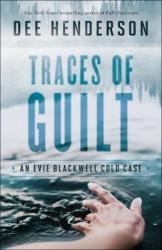
Small town crime is the plot of the novel. Cold cases are reexamined by Evie Blackwell State Police Detective to launch a new state task force. The novel kept my interest to the end because I wanted to know if and how she solved the cases. It seemed unlikely that all these cases would have occurred in a rural town setting and many of them overlapping, but perhaps I am naïve about such things. . It was interesting to follow the thoughts of police work and the background that goes into solving cases. The characters were enjoyable, particularly the Thane brothers. I enjoyed these men of integrity, their caring hearts, and the family they belong to. Evie is tenacious in her thoughts and work. I enjoyed some visiting characters from other Dee Henderson novels that I had read previously. I wouldn't say there is a lot of action suspense, but rather character development more along the lines of regular fiction. There were some touch topics that affected the characters deeply. I would recommend it if you like character driven stories.
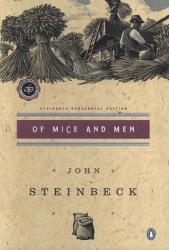
It had be a while since I first read it, but I found this book just as powerful as I did the first time, though perhaps for different reasons. Lenny's psychotic break was lost on me the first time, but now I was so disturbed I found myself reading those passages as fast as possible so I didn't have to linger on his pain and suffering. After all, how else could he react to what he had done? All he could do was punish himself the only way he knew how: Criticism from those important to him. So heart-wrenching. Meanwhile, George did what he had to do, but his spirit is broken as a result. A stark exploration of friendship and loneliness.
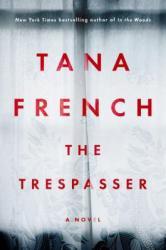
In the early hours of the morning, a man places a phone call to the local police station reporting that a woman has fallen down and hit her head in her living room. He asks for an ambulance to be sent but hangs up before the officer receiving the call can ask any more questions. When the first responders arrive at the scene, they find a young woman lying against the fireplace, dead. Junior Detectives Antoinette Conway and Stephen Moran are assigned to the case, but as they dig into the facts they start to suspect that there’s more to it than a simple domestic dispute. Try as they might, though, every new lead seems to dry up when they look into it. And it isn’t just the case that’s causing problems; everything seems to be going wrong in Conway’s life. She’s being relentlessly hazed by the other detectives on the squad; her relationship with her friends is deteriorating between the long hours and her own depression; and no matter how high their clearance rate is, neither she nor Steve are having any decent cases thrown their way. Conway is tough as nails and dedicated to her job, but the animosity of the rest of the squad and the constant scut work are starting to make her doubt her career path. This case seems like their best chance to get back on track and finally win some respect -- provided they can prove that there’s more to it than meets the eye.
This is the most recent entry in Tana French's Dublin Murder Squad series. If you're not familiar with the series, I'll say that, while each book can be read as a stand-alone without issue, there are some recurring characters that make it rewarding to read them in order. The lead in this book, Antoinette Conway, was first introduced in the preceding book, The Secret Place, and her partner, Steve, started out as a minor character in Broken Harbor. All of French’s books are excellent character portraits, so it’s rewarding to get to see the same individuals first from an outside perspective and then from within their own head, but you won’t miss anything plot-wise by skipping them. The Trespasser centers around the idea of fantasy: the stories we tell ourselves to make ourselves feel better, the stories we tell to other people to make them act the way we want them to, and the devastating effects it can have when those fantasies finally collapse. That applies as much to the detectives as it does to the victim, and so we get a nice mix of personal drama with our protagonists and the more straightforward investigation of the murder. I loved Conway as a character in The Secret Place, so I enjoyed getting to see things from her own perspective in this book. What I like about French’s books is that they have more going on than just the ‘whodunnit’. The mystery is always interesting to me, but what really shines is her portrayal of the characters and the setting: Dublin really comes alive for you in her books, and the characters feel like they could walk off the page.
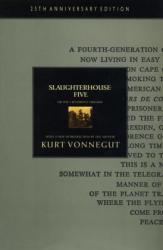
"So it goes..."
You may be thinking that based on the title it is the fifth book in a series of horror novels, but I assure you that it is not. Slaughterhouse-Five is a very thought provoking and poignant anti-war novel that has elements of science fiction, including 4th dimensional time travel and aliens. It’s a nonlinear story that follows a man named Billy Pilgrim as he travels throughout different moments in his life, weaving back and forth through differing time periods. He travels from his time as a chaplain’s assistant in World War II to his normal life with his wife and children to being an exhibit in an alien zoo on the planet Tralfamadore.
By becoming “unstuck in time”, as Billy puts it, he is able to relive these moments in his life and reflect upon them more deeply. This book is one of the best representations of 4th dimensional time travel that I've come across, and if you ever struggle to grasp the concept of time as the 4th dimension, as I do from time to time, then this book will certainly help create a better understanding of it. The book centers around Billy Pilgrim’s experiences during the war and all of the atrocities that he has seen, culminating at the end with the Bombing of Dresden, a moment which influences the rest of his life.
By being told out of chronological order, the structure of the book drives the importance and impact of the moment rather than just describing what happens next and it creates a sort of puzzle that the reader must put together. It is full of satire, wit, and black humor that is vintage Vonnegut and is one of the strangest meditations on war and humanity. If you want an extremely thoughtful book that challenges your perspective, then I highly recommend Slaughterhouse-Five by Kurt Vonnegut.

Set in the 1920’s, this is the story of Jack and Mabel, a childless couple homesteading on the Alaskan frontier. The workload is never-ending, and without children to help with plowing, planting and harvest, they struggle not only to survive, but to avoid losing themselves to despair and disappointment. It is a story not only of survival and grit, but also of the kindness found in a community of like-minded individuals and families. This theme is typical of much historical fiction about western expansion and pioneer life, but this story holds an unexpected and delightful twist, where magic, reality and fairytales intersect. The first snow of the year is met with a playfulness that is not typical of Mabel and Jack. They end their snowball fight by building a snow-child near their cabin, complete with mittens, a hat, and arms made from twigs. The next day, they discover that their snow child was destroyed during the night – likely by wild animals. Their journey from that point is full of hope and expectation. The story has a dream-like, ethereal quality, yet the author maintains the sense of solidity that is required for historical fiction to work. The pace is slow, but fits well with the time and place. I sincerely enjoyed this author’s first novel. It made me think about the importance of accepting others as they are – always an important consideration. I have Eowyn Ivey’s second book in my “to read” stack right now, and will eagerly read her future offerings.

This Arthurian tale is about noble knights, impossible quests and miracles. Camelot has fallen. King Arthur Pendragon and his Round Table of invincible knights have been destroyed. For tens years now the land has spiraled into chaos and destruction. Ruled by the evil Morgana and her hired barbarians, the people have no hope - all is lost. Guinevere, the Queen of the Britons, is hidden away in a far away abbey, safe from the assassins of Morgana - or is she? And where is Merlin the Wise, Arthur's trusted adviser? That old wizard was at the Battle of Camlann when the King fell, but has disappeared. Morgana's spies are searching the land for him and has vowed to take his head. A merchant ship approaches the shores of Albion hoping to avoid the Saxon Sea Wolves that hunt these waters now. But they're spotted, boarded and the butchering begins. Then two passengers emerge from the ship's hold. Like banshees from hell they move in deadly unison, destroying everyone in sight. Sir Percival, the last Knight of the Table, has returned.
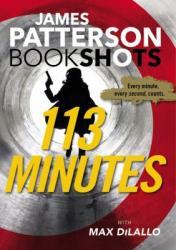
I was very curious to try one of James Patterson's Bookshots. He called them a pulse pounding thriller from beginning to end. I will say it lived up to the billing! I was immediately into the story and kept wondering what was going to happen next. 113 Minutes started off with a teenage boy dying from an overdose from crystal meth. Then there is a bank robbery, a heist of over a million dollars at a country club, and then a shootout with the Feds! Whew!!! I really enjoyed this one and can't wait to read more Bookshots!
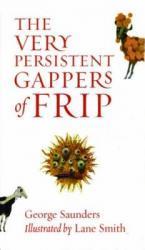
“The Very Persistent Gappers of Frip” is a mere 82 pages, and features the witty lyricism of George Saunders, National Book Award finalist, and the whimsical illustrations of Lane Smith. One might call the story an adult fairy-tale, but I believe both young and old will find it humorous and intriguing.
The story introduces the reader to round, baseball-sized creatures called gappers. They are bright orange, not particularly intelligent, and simply love goats. Saunders explains that, “when a gapper gets near a goat it gives off a continual high-pitched happy shriek of pleasure that makes it impossible for the goat to sleep” (2). For the three families that make up the town of Frip, this is bad news. Goats are their livelihood and so the children of these families must brush gappers off their goats eight times a day to keep their goats happily producing milk. The gapper trouble increases for Capable and her father when a slightly more intelligent gapper takes charge of the goat-loving critters. He decides that the whole lot should gang up on a single house rather than splitting themselves between the three houses of Frip. The other two families rejoice in their gapper-less good fortune, but poor Capable and her goats are quickly overrun by the united forces of gappers.
This story is funny, very creative, and poignant in its understanding of human nature. It expresses the importance of community and kindness, and in a way that sounds only a little preachy. Overall, “The Very Persistent Gappers of Frip,” is definitely worth a read. It requires a single sitting to finish, and rewards the reader with plenty of laughs and a renewed sense of what it means to be a neighbor.

Vinegar Girl is a modern retelling of Shakespeare's The Taming of the Shrew. In this version, Kate Battista lives a stagnant life - she got part of the way through her college degree, works a job that she hates, and lives with her scientist father and younger sister, Bunny. Kate's father starts to shake things up when he suggest that Kate marry Pyotr, his research assistant at the lab who is in desperate need of a green card.
I was pretty curious about how this book was going to shake out as the very premise is extremely offensive in modern times - it's really unpalatable to think of a strong woman being "tamed" by her husband. And unfortunately, the book does sort of go there. Pyotr did and said a few things that made him Dead To Me, and on the whole, I found most of the characters to be pretty unlikable. Kate herself was interesting and relatable much of the time, though the circumstances of her situation were pretty avoidable. The epilogue was cute, the writing fine, and the narration was great. I just think it could've been better - after all, 10 Things I Hate About You (don't judge) was a pretty successful modern retelling of the story. Sadly, for me, this book was just ok. 2 stars.
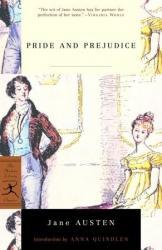
Reader beware, this is my favorite book. This is probably the fifth or sixth time I've read it. It's observant, subtle, and cleverly written. I come away with something new every time I read it. This time I felt for Elizabeth upon coming to the realization that her father was greatly to blame for the shortcomings of her three younger sisters. Oh, and Mr. Darcy's subtle devotion to her was more apparent to me this time around. It's easy to imagine the BBC version and characters while reading, but this book - like most books - is more richly constructed than the mini-series.
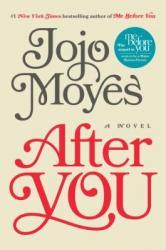
It’s been 2 years since Will Traynor’s death. Louisa Clark traveled for a while, but now she is stuck in a bad job and just treading water. Even surviving a fall from the rooftop of her apartment building doesn’t shock Louisa into wanting to experience more of life. Louisa joins a support group to deal with her grief and develops a relationship with the paramedic who saved her. However, it’s the arrival of teenage girl with a link to Louisa’s past that sets her life into a spin and changes it in more ways than she could ever have imagined. After You, Jojo Moyes’ sequel to Me Before You, is a well-written, realistic look at dealing with grief and all the curves life throws at a person. Fans of the first book will feel like they are catching up with an old friend. Be prepared to cry and laugh out loud as you spend more time with this loveable character.
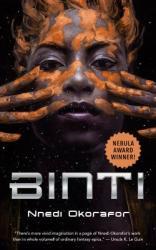
This was a fun little sci-fi novella. Binti is about a Himba girl from Earth -- the eponymous Binti -- who is accepted into a super-prestigious university and becomes the first Himba to go off-planet to attend college. There's a lot of prejudice against Himba by the Khoush on Earth, so Binti is nervous about traveling outside of her homeland, but when she gets on a shuttle with fellow students they find they have their love of science and astronomy in common, and she begins to feel optimistic about attending Oomza University. However, part-way into the journey the Meduse, a type of alien in a long war against the Khoush, attack the ship at dinnertime and kill all the students -- except for Binti. She’s not exactly sure why, but it seems to have something to do with a mysterious artifact she found in the desert that she keeps as a good-luck charm. Binti hides in her room, but she fears it will only be a matter of time until the Meduse kill her; she might not be Khoush, but she's a human on a Khoush ship, and that's enough. What seemed like the beginning of an exciting new life now is going to end just days after her departure.
I listened to Binti as an audiobook, and the narrator did a wonderful job with the story. I enjoyed Binti’s perspective and was drawn in by the back-story of their world -- the astrolabe technology everyone seems to use, Binti’s skill as a Harmonizer, living space-ships, and many other intriguing details. It’s extremely short -- just 90 pages -- and at the end I definitely wanted more information about the world and its people and technology. On the one hand, it’s good that Okorafor made me care enough to be interested in hearing more, but the tradeoff was that book felt a bit rushed/cramped at times. There are novellas that work perfectly in that form and are paced so well that they’re as rich and complete as a full-length novels, but this one didn’t quite meet those standards. This is intended to be the first book in a series, so I'm cutting it some slack for that reason, but it still didn't quite work on its own. The message was strong, but there were plot points I would have loved to see explored in more depth, relationships I wish had been better fleshed out, and some finer details of the setting that I wish Okorafor could have delved into to make for a more satisfactory ending. I still enjoyed the story for what it was, and I'll be looking out for the next entry in the series, but it fell a bit short of what I wanted. That being said, it's a creative story with a very cool setting, and I would certainly recommend Binti to fellow sci-fi fans.

The Mortifications follows the Encarnacion family from Cuba to Connecticut and then back to Cuba again. Soledad's husband, Uxbal, is heavily involved in rebel groups resisting Castro's regime. She doesn't want her children growing up in that environment, and eventually she decides to take them and leave for America without her husband. Uxbal tries to hold her daughter Isabel captive, but she threatens to cut his son's throat if he doesn't let her take both their children. They escape successfully, but the incident leaves deep scars on everyone in the family. Soledad eventually begins a new relationship with Henri Willems, a Dutch man trying to cultivate Cuban tobacco in the US, and all the while she and her children drift further and further apart from one another as they try to adjust to their new lives.
The Mortifications is a leisurely-paced book and it draws rich portraits of all the characters: Soledad, who takes her children from Cuba to America to protect them but finds herself haunted by a lost marriage and country; Isabel, who took a vow to her father to remain chaste until she could have rebel children for his militia, and who later joins a convent in an effort to keep this vow; Ulises, a student of classical literature who feels abandoned by his mother, father, and sister alike; Willems, who is haunted by the idea that his tobacco holds the ghosts of the slaves his family once owned in Haiti; and many more minor characters who are written with equal depth and sympathy. It was a genuine pleasure to read -- beautiful writing, very introspective, and with enough humor to keep it from being too relentlessly depressing. That being said, it's a very (and I mean very) slow-paced book and is focused more on the internal lives of the characters than any cohesive plot, so that might be frustrating to readers looking for something with a little more structure. I would give it 3.5 stars, in large part because the writing was absolutely gorgeous.
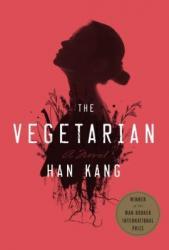
In this inventive South Korean novel (based on an earlier short story by the author), a woman decides to become a vegetarian after a disturbing, blood-soaked dream leaves her convinced that she needs to purify herself. Yeong-hye remains largely a mystery to us throughout the novel -- we hear about the situation mainly from her husband, brother-in-law, and sister, and they're often more interested in what they want from her (passivity, "normal" behavior, sexual gratification) than in understanding what's happening inside her mind. It's interesting to watch the escalation of behavior that's considered inappropriate; even the most mild changes to her routine provoke violent reactions and eventually lead her family members to cross lines of their own. At first, not eating meat alone is shocking and indicative of disrespect for her husband, then a refusal to wear a bra, then a discomfort with speaking -- and the gap widens more and more between Yeong-hye and the people around her as she withdraws from the world in her obsession with becoming more plant than animal.
Still, despite the oddity of the premise, it reads more like horror than comedy, and there was some real emotional weight to Yeong-hye's problems and to the exploration of the internal lives of her family as they react to her rebellion in increasingly bizarre ways. I liked the first section (dealing with the destruction of Yeong-hye's marriage) more than others, but they were all fascinating, and the sister's perspective helped bring things to a satisfying conclusion. Some parts were a bit too on the nose for my taste, but it was an engrossing read overall. There was a lot of reflection on the position and treatment of women in modern-day South Korea, which may interest some readers, as well as a more general look at the everyday violence around us, people's inner desires, and the pressure to conform. (I'd give this 3.5 stars if I could, but I rounded up because the writing deserved it.)
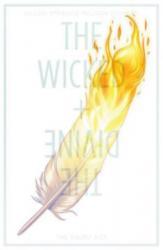
This series is really a must-read for fans of modern fantasy, mythology and pop culture. The Wicked + the Divine takes place in a world where a phenomenon called the Recurrence occurs every 90 years, causing a Pantheon of twelve deities from across human cultures to awaken within the bodies of young adults, granting them tremendous superhuman abilities. They will be loved, they will be hated, but two years after awakening, they will all be dead. The year is 2014 and the Recurrence has come again, and this new crop of gods blurs the line between the way deities were worshipped in ancient times and the way humankind worships its popular icons in the modern day. Though they are reincarnations of figures from antiquity- Lucifer, Woden, and Minerva, for example- their personas and appearances invoke modern musical icons like Daft Punk, David Bowie and Prince, and their worshippers stalk their instagram feeds and attend sold-out concert-like performances of their miracles.
However, all is not divine within the ranks of the Pantheon. Skeptics dismiss their claims of "godhood" and "miracles" as delusions, hallucinations or special effects, and point to the last Recurrence - which took place during the 1920s - as the product of the same sort of hoax as those performed under the umbrella of Spiritualism during that era. And, these new gods have all the hormones, the petty selfishness and the capriciousness of the teenagers and young adults they used to be, only now they have superhuman powers at their fingertips, and the weight of the knowledge that for all their strength they will all die before two years have passed. The mysterious goddess Ananke, who exists outside the cycle of the Pantheon, is the only being who seems to understand the forces at work behind the Recurrence, and she acts as something of a guiding light for the gods, though a cryptic and guarded one, at best. Into this tumultuous mix enters Laura, our narrator, a god-obsessed superfan who idolizes the Pantheon to the point of distraction. Though Laura wants nothing more in this life than to be a god herself, she settles for attending their tours, buying their merchandise and following them obsessively on social media, getting as close to them as she possibly can. That is, until she unexpectedly befriends the young Lucifer at a concert and finds herself suddenly drawn into the beautiful, deadly and miraculous world of intrigue that surrounds the members of the Pantheon.
This comic is incredible, both in terms of its writing and worldbuilding, and its art, which is both stunning and incredibly consistent. It is also a wonderful example of diversity and inclusiveness in what is, essentially, a superhero comic - Laura is part of a loving biracial family, Lucifer is a polyamorous, genderfluid woman who is a dead ringer for Bowie, and representation of queer characters, women and people of color abound. I collect this comic religiously (hah!) in both its individual issues and its trades, and I really cannot recommend it enough. However, when our rating says M/Mature, we MEAN it. While there isn't much in the way of graphic sexual content, there is some gore, frequent adult language, and a whole lot of adult situations.
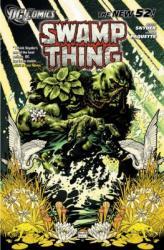
"Swamp Thing: Volume One, Raise Them Bones" is the beginning of Scott Snyder (author) and Yanick Paquette (illustrator)’s visceral, mythic run on the comic, which I recommend heartily to fans of horror/grotesque gothic stories.
Detailing the eternal conflict between the Green (plant life), the Red (animal life) and the Rot that would consume and twist everything, Snyder’s interpretation of Swamp Thing is full of haunting imagery and interesting worldbuilding. Later on, the comic run is taken over by Charles Soule, who does a lovely (albeit very different) job carrying on the story.
For now, though – renowned botanist Alec Holland has been chosen by the Green to shed his humanity and become their knight. Will he go willingly? And what will become of him now that he’s been claimed, whatever he chooses to do?
Warnings:
-- This book is suited for older audiences, in my opinion, and definitely not children. The illustrations are often what one might call “graphic.” Be warned. It is something of a horror comic.
-- If you like this first volume and keep on with the series, just know that during the Rotworld arc, "Swamp Thing" crosses over with Jeff Lemire’s "Animal Man." It may behoove readers to pick up "Animal Man: Volume Three, Rotworld," at least, in order to get a complete look at the story. :)
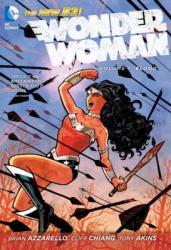
Real Rating: 4.5, rounded up. 6 stars for the Olympians!! Not so many stars for Orion and some of the other creative choices here regarding Diana's origins (that's personal, though -- you may disagree with me.) BUT THE OLYMPIANS, THOUGH.
Brian Azzarello’s work isn’t always my cup of tea, but I have to say I really appreciate a lot about his recent run on Wonder Woman, beginning with “Wonder Woman Volume One: Blood.” A lot of my appreciation for this comic stems from its creative portrayals of the Greek gods – Dionysus can twist the world as a proper god of madness, Apollo is made out of sizzling magma-ish sun stuff, with an obsidian skin hardened over his fiery insides, and Artemis is literally shaped out of fluid moonlight. It’s gorgeous, and a ton of fun. If you love Greek folklore but have always wanted to see Poseidon represented as a barnacle-crusted sea monster, this may be the perfect series for you. Cliff Chiang's art is also very modern and playful, which fits the optimistic tone of the book perfectly. Diana is fierce and loyal, here, a heroine truly worthy of the name “Wonder Woman.” Some of the characters didn't mesh with me so well (>:( I'm looking at you, Orion!!! Augh!!) but despite that I eagerly awaited every volume of this series as I was reading it, so… Consider it hereby recommended for the fun-factor alone. Watch Hera try ice cream for the first time! Watch Artemis run rampant through a tube station! ALL IN DC COMICS CANON! Yes!
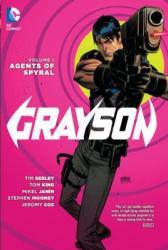
"Grayson Volume One: Agents of Spyral" (by Tom King and Tim Seeley, illustrated by Mikel Janin), gifts readers with a remarkable glimpse into Richard Grayson's head. Formerly Robin, formerly Nightwing but CURRENTLY (as of this comic :P) infiltrating a super-secret web of spies at Batman's behest, Grayson of the acrobatics and charming banter has been tossed into an unfamiliar world of misdirection and the coldest of cold scheming. Here, the agency's morally twisted Hypnos implants allow spies to sneak memories and emotions into unsuspecting human minds, as well as alter their own appearances at will. Here, the former Boy Wonder plays at a dangerous balancing act, pretending to be a loyal to his new director -- a man who always technologically blurs out his own face -- even while living by the codes and ideals he learned from Batman on the rooftops of Gotham. At least in Gotham, the rot and criminal horror of things is plastered right there on the surface, and Richard has a decent enough idea who he can trust... And who he, himself, actually is.
I cannot recommend King and Seeley's Grayson run highly enough, to be honest. It's playful and funny one minute, and then genuinely heart-wrenching the next. It might be in part my affection for dear Mr. Grayson as a character, but... Coming from someone who doesn't usually enjoy spy stories, this series is EXCELLENT. I know it won't be everybody's cup of tea, but if you're interested at all in Robin/Nightwing/the guy who can be both sometimes, when it's needed, you might really get into this series.

Writer Scott Snyder and artist Greg Capullo are each AMAZING in DC's just-ended Batman run, starting with "Batman Volume One: The Court of Owls." Seriously, amazing. These books are morbid and playful, working with Batman's psyche and the twisted fairy-tale that is Gotham in a way I think works really, really well. Bruce Wayne feels fully-realized and complicated, as a character, and a great many of the Bat Family get a chance to shine. I personally love Snyder's take on Batman's ensemble of villains, from the Joker (don't worry, he'll show up soon) to the infamous Crazy Quilt (yes, I'm serious.) The "Court of Owls" introduced in this first volume adds yet another layer of rot to this already twisted city, wonderfully developing both the Wayne family history and Gotham as a symbol. I'll leave you with a nursery rhyme repeated throughout the Court of Owls arc, to give you a feel for what sort of story is waiting for you here: "Beware the Court of Owls, that watches all the time, Ruling Gotham from a shadowed perch, behind granite and lime. They watch you at your hearth, they watch you in your bed. Speak not a whispered word of them, or they'll send the Talon for your head." Come on! If that isn't a recipe for fun Batman shenanigans, I don't know what is. :)

Writer Tom King and illustrator Gabriel Hernandez Walta come together to make something really unique and thought-provoking in "The Vision Volume One: Little Worse than a Man." Here, Vision of the Avengers is trying to make a human family for himself, tucked into an unsuspecting suburb in Virginia. He used Wanda Maximoff's brainwaves to build himself a wife (because THAT can't possibly go badly, right?) and has combined their code to form two children, Vin and Viv, who will be learning what it is to be an artificial life even while having to attend public school. Despite this potentially sitcom-esque set up, the Vision family presents readers with a very dark, pensive future indeed, full of melancholic narration that borders on poetry. This series is about identity, and good intentions gone horribly awry, and what it is to be human... More, what it is to crave humanity from the outside, crave it so desperately that you will do monstrous things for its sake. (I know that theme might feel a tad overdone, given how often it appears in stories about robots, but I think this comic handles it in a refreshing way. :D)
Anyhow, some of my friends who don't even like comic books waited eagerly for the monthlies on this series as it was coming out... It's definitely atmospheric, and stirring, and sad, though it also features a cheerful robotic puppy and some tongue in cheek dark humor. It's not a HAPPY comic, but it's a valuable one.


